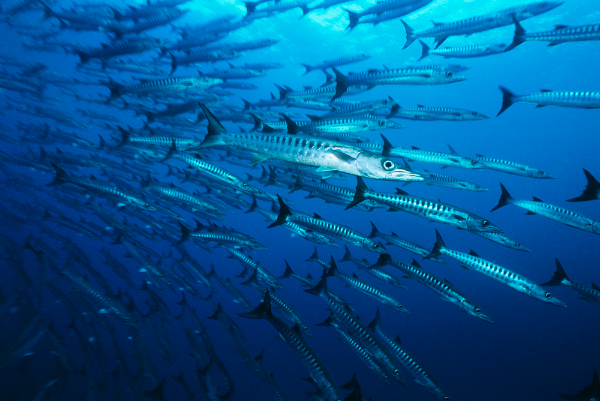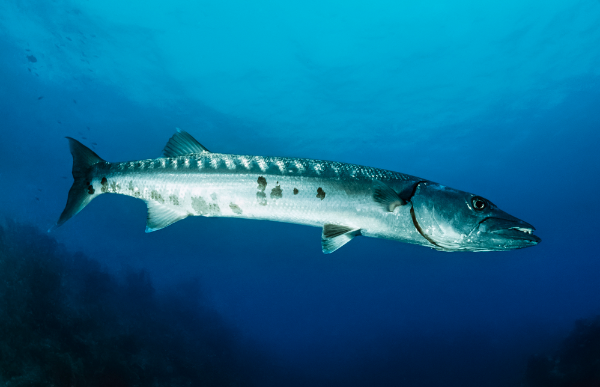The barracuda is a predatory fish that is found in both fresh and salt water. They are known for their sharp teeth and fast speed. Barracuda can be a challenge to catch, but they are worth the effort because they make great sport fish. In this blog post, we will discuss the barracuda’s physical characteristics, diet, spawning habits, and how to catch them. We will also provide some information on barracuda fishing tournaments. So if you’re interested in learning more about these amazing creatures, keep reading!

Barracuda Description
Barracudas are large, predatory fish that are found in tropical and subtropical waters around the world. Growing up to six feet in length, barracudas have long, torpedo-shaped bodies with large mouths filled with sharp teeth. They are excellent swimmers and can reach speeds of up to 25 miles per hour when pursuing their prey. Barracudas primarily eat smaller fish, but they will also feed on squid, crabs, and other marine creatures. Due to their large size and ferocious nature, barracudas are considered to be one of the most dangerous fish in the ocean. However, they are not typically aggressive towards humans and attacks are relatively rare.
Barracuda Habitat
Barracudas are found in tropical and subtropical waters around the world. They typically inhabit coastal areas, but can also be found in open ocean, as well as brackish and fresh water. Barracudas prefer to stay in deeper waters, but can be found in shallower waters near reefs and drop-offs. Barracudas are predators, and their diet consists mainly of fish. However, they have been known to eat other marine animals, such as squid, crustaceans, and mollusks. Barracudas are solitary creatures, and only come together to mate. Females lay eggs in the water, which hatch into larval barracudas. The larvae then drift with the currents until they reach an area with adequate food and shelter. At this point, they settle into a new home and begin to grow into adults. Barracudas can live for up to 20 years in the wild.
Barracuda Diet
Barracudas are carnivorous fish that primarily feed on smaller fish and invertebrates. They are opportunistic predators that will also eat carrion, and they have been known to attack larger prey such as dolphins and turtles. Barracudas typically hunt in groups, using their speed and agility to herd their prey into tight groups before attacking. Barracudas are also known to be capable of leaping out of the water to snatch low-flying birds. The diet of a barracuda can vary depending on the location and availability of prey, but they are generally considered to be an important part of the marine food chain.
Barracuda Size
Barracudas are large, predatory fish that are found in both fresh and salt water environments. They vary in size, with the largest barracuda reaching lengths of up to 6 feet. Barracudas are streamlined animals with large mouths and sharp teeth. They are ambush predators, lying in wait for their prey before attacking with lightning speed. Barracudas are not timid fish, and have been known to attack humans when they feel threatened. In general, barracudas are not considered to be dangerous to humans unless they are provoked. However, it is best to avoid them if possible, as their sharp teeth can cause serious injuries.

Barracuda Lifespan
Barracudas are a type of fish that is known for its long lifespan. Barracudas typically live for around 20 years, though some have been known to live for up to 30 years. The longest-lived barracuda on record was a fish that was caught in the wild and lived to be 24 years old. Barracudas are a popular choice for aquariums because of their long lifespans. However, it is important to note that the lifespan of a barracuda in captivity may be shorter than the lifespan of a barracuda in the wild. This is due to the fact that barracudas in captivity are often not given the same type of care and diet as they would receive in the wild. As a result, captive barracudas may only live for 10 years or less.
Barracuda Behavior
Barracudas are a type of ray-finned fish known for their large size and predatory behavior. They are found in tropical and subtropical waters around the world. Barracudas are predators, feeding on smaller fish, squid, and crustaceans. They use their sharp teeth to tear apart their prey. Barracudas are known for being aggressive and often swim in large schools. They have been known to attack humans, though these attacks are rare. Barracudas are an important species in the marine ecosystem, helping to keep populations of other fish in check.
Barracuda Speed
Barracuda are one of the fastest fish in the sea, capable of reaching speeds of up to 30 mph. Their streamlined bodies and powerful tails allow them to rapidly accelerate in pursuit of prey. Barracuda are excellent swimmers and are often found near the surface of the water, where they use their speed to ambush unsuspecting prey. Barracuda are not only fast, but also aggressive predators. They have large mouths filled with sharp teeth, which they use to tear flesh from their victims. Barracudas are found in tropical and subtropical waters around the world, and are a popular target for sport fishermen. While they are considered dangerous creatures, barracudas rarely attack humans and there have been no documented fatalities caused by these fish.
Barracuda Hunting
Barracuda hunting is a sport that has been around for centuries. Barracudas are large, predatory fish that can grow up to six feet in length. They are found in tropical and subtropical waters around the world, and are known for their ferociousness. Barracudas typically hunt in groups, using their sharp teeth to tear their prey apart. Barracuda hunting is considered a challenging sport because of the barracudas’ size and strength. Hunters must be experienced in using specialized equipment, such as spears and harpoons. Barracuda hunting is also dangerous because of the risk of being bitten by a barracuda. Despite these risks, barracuda hunting continues to be popular among those who appreciate the thrill of the hunt.
Conclusion
Barracuda fish are some of the most feared predators in the ocean. With their razor sharp teeth, they can easily take down prey much larger than themselves. But what happens when these fearsome creatures are faced with something they can’t eat? In this video, we see a barracuda being harassed by an octopus, and eventually giving up and swimming away. This is an interesting example of how animals can adapt to overcome challenges in their environment. What threats do your customers face when making a purchase? Can you help them overcome these challenges and seal the deal? Let us know how we can help you create a marketing strategy that takes advantage of your customer’s natural tendencies.
Frequently Asked Question

